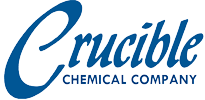Defoamers, antifoaming agents, and air release agents are chemical processing aids employed to minimize or eliminate foam in industrial operations. While the terms are often used interchangeably, they employ different mechanisms, so it is worth distinguishing between them.
- Defoamers are foam control agents which are added to a system to reduce or eliminate foam after it has been formed.
- Antifoaming agents are foam control agents which are added to a system or formulation to prevent the appearance or emergence of foam.
- Air release agents help remove entrained gases from a solution and raise them to the surface.
These categories are not strictly mutually exclusive. For instance, many chemical formulations both prevent and destroy foam, in which case they could be classified both as antifoaming agents and defoamers. Additionally, many defoamers have some effect on entrained air, while some air release agents initiate the destabilization process for surface foam.
For the sake of simplicity, the term “defoamer” is generically used as an industry standard when referencing any processing aid designed to control foam.
What Is Foam?
Foam occurs when gas is introduced into and stabilized within a solution. In pure liquids (e.g. water), foam is thermodynamically unstable, and any bubbles will rapidly rise to the surface and burst. Stabilization is only possible in solutions containing additional surface active components that create a surface tension gradient at the gas-liquid interface (the foam lamella, foam film, or bubble wall), thereby allowing for much greater foam stability as air is introduced into the solution.
Gravity inherently drains the liquid from foam, which results in the formation of a “dry” polyhedral foam beginning from the top of the foam down. Individual bubbles vary in size and capillary pressure within the foam, so gas naturally diffuses from smaller, higher pressure bubbles to larger bubbles. However, as the foam film stretches, the concentration of surface active ingredients decreases. This decrease in concentration causes a local increase in the surface tension of the foam film, thereby impeding the coalescence of bubbles and stabilizing the foam (Gibbs-Marangoni Effect).
How Do Defoamers Work?
Generally speaking, one of the primary requirements for defoamers is a partial solubility. A defoamer, in essence, must be “half-in, half-out”. If it is too far “in” (i.e. too dispersible or soluble), it will not destroy foam, and may even contribute to additional foam build up. If it is too far “out” (i.e. not dispersible enough or too insoluble in the system), it can cling to equipment, contribute to surface defects or cause other issues. Each defoamer formula must be intentionally formulated to achieve the proper level of compatibility.
Additionally, defoamers must have a low surface tension and spread rapidly along the gas-liquid interface, achieving maximum interaction with the foam. As an effective defoamer spreads, it must be capable of displacing the foam-stabilizing surface-active components and penetrating the foam’s lamellae to allow the entrapped gas to escape and the foam to burst.
Chemistry of Defoamers
Which defoamer is most appropriate for a given solution depends on several factors, including the chemical composition & physical properties of the foaming solution, the method of foam generation and the type of foam present.
Typically, defoamers are formulated around a carrier fluid, which may be a hydrocarbon, silicone oil, vegetable oil, synthetic polymer, etc. Active ingredients, which help with spreading or destabilizing foam, can include waxes, metal salts, silicas or other hydrophobic particles. An emulsification system can be incorporated to optimize spreading and compatibility of the defoamer to a given foaming system and depending on the chemistry, stabilizing agents such as cellulosic or acrylic thickeners may be added to improve shelf stability.
Crucible maintains an extensive portfolio of defoamer chemistries. The following represent some of the broader categories of defoamer and their common uses:
Silicone & Organo-Silicone Defoamers
Silicone & organo-silicone defoamers are highly efficient and broadly effective in a wide variety of applications. These products are based on silicone oils (polydimethylsiloxane or modified siloxanes), often with hydrophobic silica dispersed in solution. Silicone oils have a very low surface tension, which contributes to rapid spreading at the gas-liquid interface and facilitating the weakening of the foam films and penetration of the bubble wall.
Crucible supplies these types of products as 100% active silicone compounds, dispersions, or as emulsions, which are readily dispersible in aqueous systems.
Non-Silicone Defoamers
Non-silicone defoamers can be further broken down into several categories. The most broadly used are mineral oil-based due to their optimal performance and lower cost. Non-silicone defoamers are also formulated with vegetable oils, white oils, esters, fatty alcohols, synthetic polymers, etc., depending on the characteristics, compatibility, and requirements of each foaming system. These defoamers often include hydrophobic particles (e.g. silicas, waxes, etc.) to boost performance and may be supplied as insoluble or partially soluble dispersions, emulsions or self-emulsifiable, 100% active liquids.
Within this category, Crucible also supplies VOC, APE (alkylphenol ethoxylate) and silicone-free defoamers with our Foamkill™ V product line. These products are optimal replacements for traditional mineral-oil based products used in adhesives, defoamers for paint and coatings, and numerous other applications.


